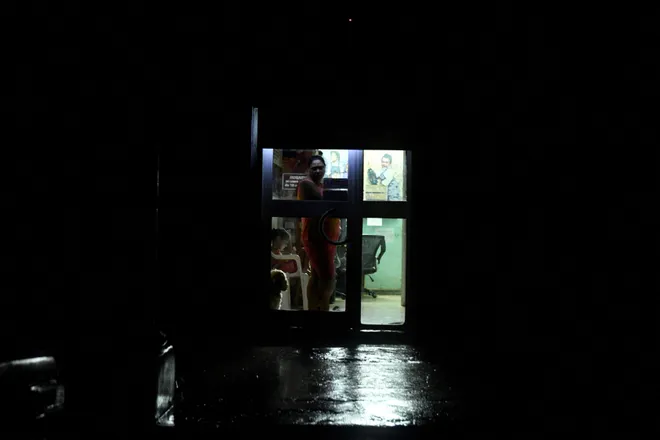Hurricane Rafael storms into Gulf after slamming Cuba, collapsing power grid
Hurricane Rafael churned in the open waters of the Gulf of Mexico on Thursday, moving away from Cuba after pummeling the country with flooding rain and knocking out its vulnerable electrical grid.
The storm was 180 miles west-northwest of Havana and 195 miles west of Key West, Florida, according to the National Hurricane Center's 7 a.m. update. With winds of 105 mph, Rafael remained at Category 2 strength, which it had weakened to as it barreled across the island.
Meteorologists discontinued the storm-related advisories and watches as Rafael was expected to "meander over the south-central Gulf of Mexico this weekend and early next week," steering well away from coastal areas. Forecasters say it will weaken and could possibly dissipate before reaching the western Gulf Coast.
Hurricane Rafael tracker:Storm heading toward Gulf of Mexico after making landfall in Cuba
Rafael made landfall late Wednesday afternoon in Cuba as a Category 3 storm, bringing a deluge that triggered flash floods and another island-wide blackout, furthering a crisis that has left many without power for over two weeks and which has been worsened by two consecutive hurricanes

Some 10 million people were without power across the country Thursday as Cuban authorities struggled to restore electricity. The country's state-run media said it had returned power to some areas but that the capital city of Havana largely remained in the dark.
As the storm pushes further into the Gulf, it will still produce mudslides and flooding along Cuba's higher terrain as it drops an addition 2 to 4 inches of rain, the National Hurricane Center said. Parts of western Cuba will see up to a foot of rain by the time Rafael moves completely away from the island.
Days before Rafael's landfall, tens of thousands of people evacuated the eastern province of Guantanamo after a series of storms produced torrential downpours and triggered flooding. By that point, the ground had already been saturated from the deluge wrought by Hurricane Oscar, a Category 1 storm that killed at least six people last month.
As a preventative measure, thousands were evacuated from Cuba's western provinces, especially low-lying areas, as Rafael approached. The country also shut down government offices and closed schools. Jose Marti International Airport in Havana was scheduled to remain closed until at least late Thursday afternoon.

Wil Rafael hit the US Gulf Coast?
The latest forecast tracks agree that Rafael will barrel westward over the coming days, though it's unclear how long it will maintain its strength and how far west it will track.
"Once in the Gulf of Mexico, slight differences in Rafael's intensity and atmospheric steering winds could have a significant impact on its final track," Bill Deger, a senior meteorologist with AccuWeather said.
The probability of any U.S. landfall is extremely low, the latest AccuWeather forecast says.
A non-tropical storm from the south-central U.S. could also impact the hurricane's direction, leading meteorologists to urge residents along the Gulf Coast to monitor Rafael through the rest of the weekend and into next week.
"It is also possible Rafael is torn apart by strong winds high in the atmosphere and dissipates in the Gulf of Mexico before making landfall," Deger said, noting expected weakening from cooler water and wind shear.
Another storm system could develop in the Caribbean
As Rafael moved further into the Gulf of Mexico, meteorologists watched the possible development of another storm system in the Caribbean Sea.
Located several hundred miles east-northeast of the Leeward Islands, the system could undergo gradual development over the next few days as it moves near the Greater Antilles. Formation over the next week was, however, considered "low" at 20%, down from 30% a day earlier, according to the National Hurricane Center.
Showers and thunderstorms associated with the brewing system were expected to bring heavy rain to the northern Leeward Islands, the Virgin Islands, Puerto Rico, Hispaniola and the southeastern Bahamas through Saturday, the National Hurricane Center said.
The 2024 Atlantic Hurricane season proved well above average for both named storms and hurricanes, which meteorologists say has been fueled by record warm oceans.
Rafael storm tracker
Contributing: Reuters; Jorge L. Ortiz and Doyle Rice, USA TODAY
Disclaimer: The copyright of this article belongs to the original author. Reposting this article is solely for the purpose of information dissemination and does not constitute any investment advice. If there is any infringement, please contact us immediately. We will make corrections or deletions as necessary. Thank you.


